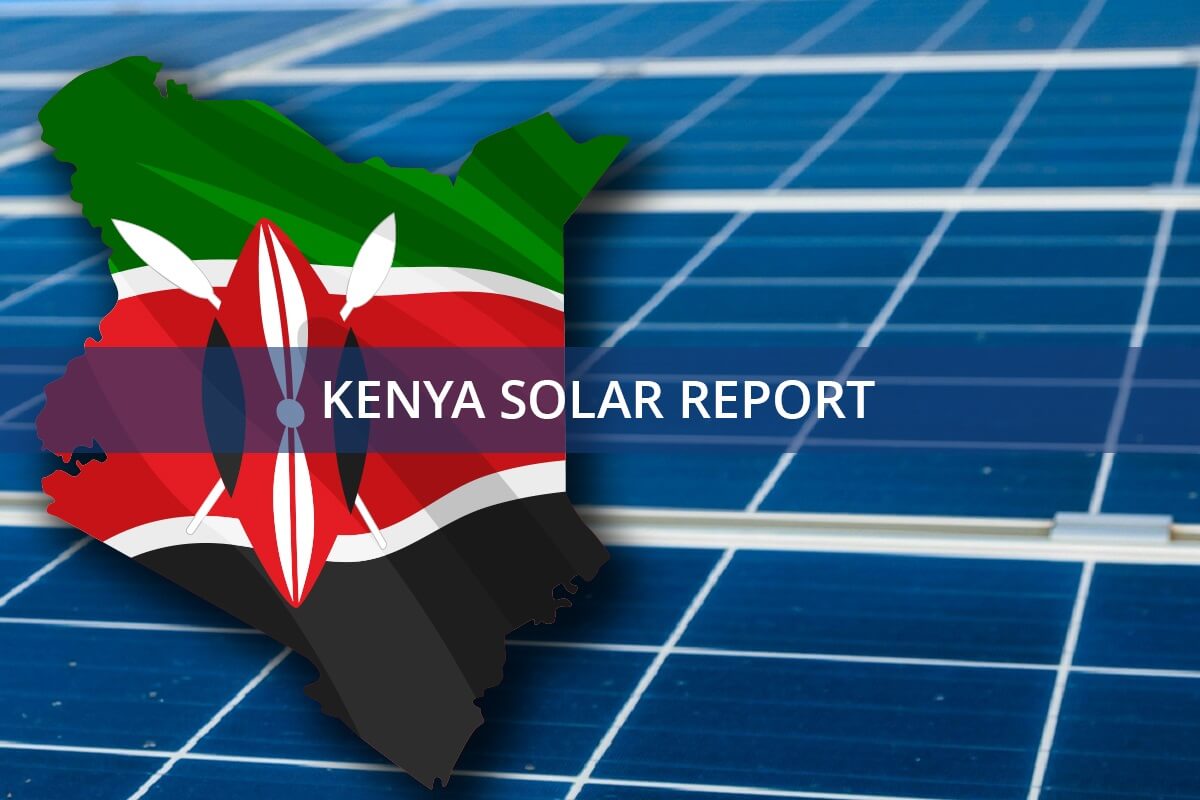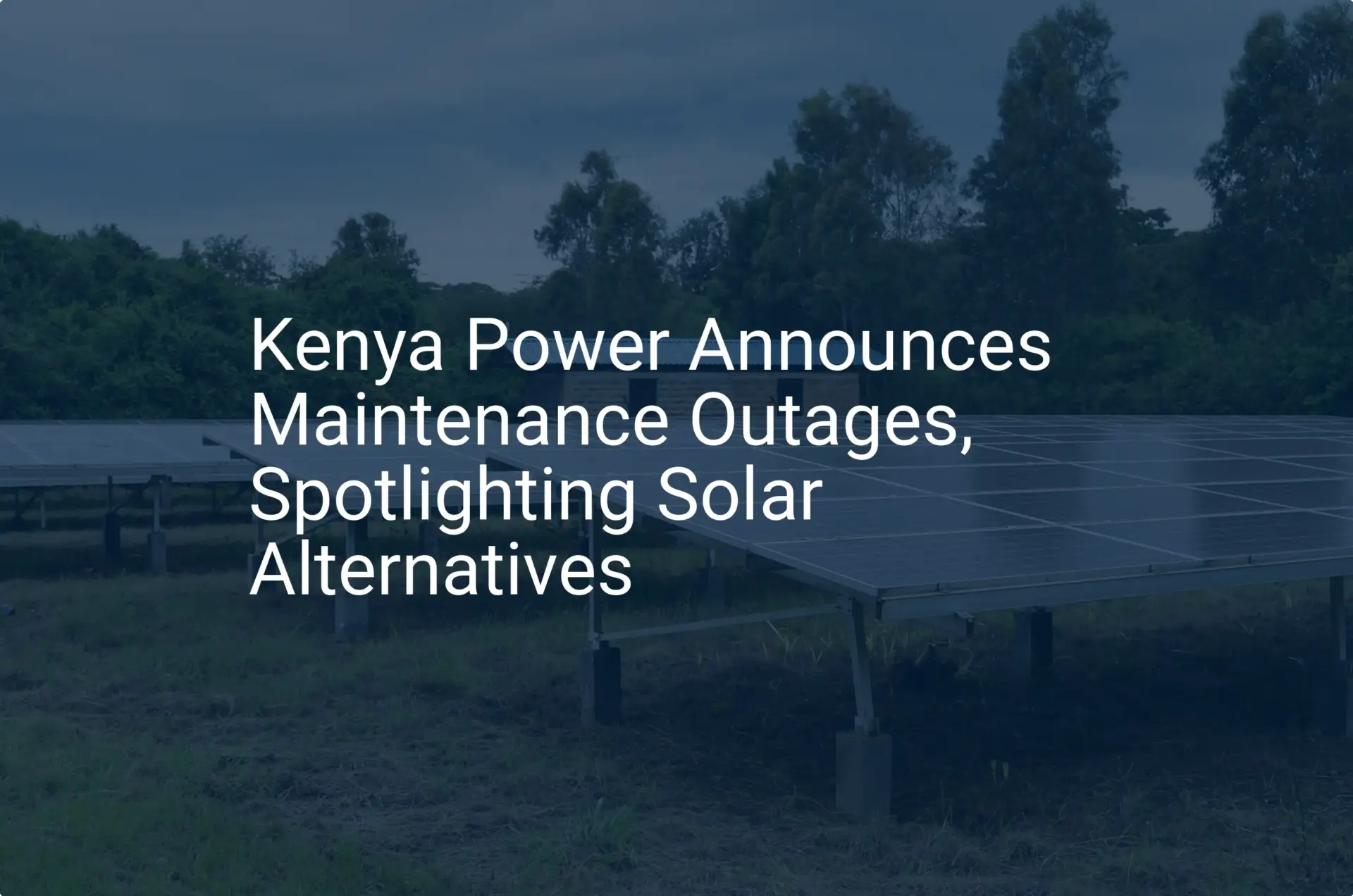So, you’re thinking about setting up a solar panel manufacturing plant in Kenya? That’s fantastic! You’re looking at a country blessed with incredible sunshine and a real, palpable drive for renewable energy – honestly, it’s a truly exciting prospect for anyone considering solar panel manufacturing in Kenya. As Kenya charges towards its Vision 2030 and net-zero goals, the hunger for solar solutions is only going to get bigger. But, hold on a second – before you dive headfirst into this sunny adventure, it’s super important to get a real feel for the groundwork: power, transport, and those prime industrial spots. We’ve put together this guide, drawing on our team at PVknowhow.com’s global experience in getting solar factories up and running, to help you make some really smart choices for your site.
Table of Contents
1. Kenya Really Ready for Your Solar Manufacturing Venture?
Let’s cut to the chase: Kenya is increasingly shaping up to be a prime location for green manufacturing. The government is seriously throwing its weight behind renewable energy, and there’s a strong, undeniable market pull from both grid-connected and off-grid demands – something folks like SEforALL and KIPPRA have been highlighting. And just look at the numbers: between 2020 and 2024, Kenya imported solar PV modules worth a staggering USD 296 million (thanks to SEforALL for that data). That’s a big ol’ gap local solar manufacturing in Kenya could beautifully fill!
Now, while the opportunity is shining brighter than the Kenyan sun, figuring out the Kenya solar infrastructure is absolutely key. Kenya’s power grid, while impressively green (which we love!), does have its occasional reliability wobbles. On the flip side, major investments in transport, especially the Standard Gauge Railway (SGR), and the exciting rise of Special Economic Zones (SEZs) are creating some very positive conditions. This guide? It’s for you – the investors, the manufacturers, the consultants, anyone weighing up solar panel production in Kenya. We want to offer you solid insights into the essential infrastructure that will truly make or break your operational efficiency and, ultimately, your success.
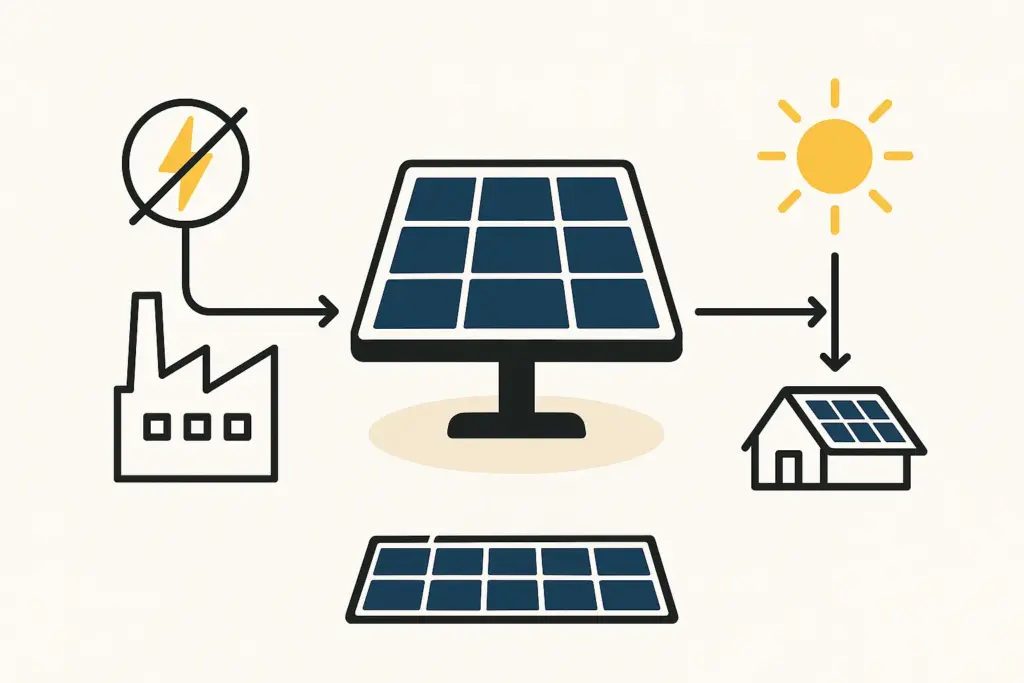
2. Powering Your Production: What Kenya’s Electricity Grid Means for Solar Factories
Reliable and affordable electricity is the lifeblood of any factory, right? And it’s especially true for the energy-hungry processes involved in making solar panels. So, let’s take a closer, honest look at Kenya’s electricity grid situation.
A. How Reliable is the Grid Right Now?
Okay, transparency here: Kenya’s power grid has, admittedly, faced some questions about its consistency. For instance, reports floating around late 2024 indicated the average monthly power outage duration was hovering around 9.15 hours, with system losses near 24.2% (sources like KenyanWallStreet and Hivisasa have touched on this). These figures can be a genuine worry if you need power ticking over around the clock for your solar factory in Kenya. The usual suspects behind these hiccups? Things like aging infrastructure, some maintenance gaps, and unfortunately, vandalism (as Hivisasa has noted). The good news? There are real, ongoing efforts to tackle these challenges head-on.
B. What’s in the Energy Mix?
Now, here’s a real plus for Kenya’s grid: its incredibly high proportion of renewable energy. Back in 2022, something like 92% of electricity came from green sources – we’re talking mainly Geothermal (35.8%), Hydropower (32.4%), Wind (16.5%), and Solar PV (11.6%), based on PVKnowhow data. By 2022, Kenya had already installed over 170 MW of solar capacity, and the government is aiming for a cool 600 MWp from solar by 2030 (according to PVKnowhow and Roedl.com). This green mix? It’s a fantastic selling point for sustainable manufacturing, and something to be proud of.
C. The Cost of Power for Industry
When you’re crunching the numbers for your budget, you’ll find industrial electricity costs in Kenya typically sit somewhere between $0.13 and $0.20 USD/kWh. Our own 2024 Kenya Solar Report here at PVknowhow.com pointed to an industrial tariff around $0.18/kWh. Definitely keep these figures handy; they’re a key piece of your operational expenses puzzle.
D. What’s Being Done to Improve the Grid?
You’ll be glad to hear the Kenyan government and the power sector players aren’t just sitting idle; they’re actively modernizing the grid. They’re busy building new substations (like Kimuka and Narok-Bomet), laying underground cables in cities (smart move!), rolling out smart grid technology, and developing 113 solar mini-grids to boost energy access and stability (hat-tip to Hivisasa and PVKnowhow for this info). These upgrades are absolutely vital for better overall performance, and it’s great to see that progress.
E. Smart Moves for Solar Factories
Given the current reliability stats, if you’re gearing up to set up a solar panel factory, it’s really wise to consider a couple of things:
- Backup Power Solutions: Seriously, don’t skimp here. Investing in solid backup systems (think generators, UPS) is crucial to prevent those production headaches that outages can cause.
- Generating Your Own Solar Power: With Kenya’s fantastic sunshine (we’re talking 4-6 kWh/m²/day, as KIPPRA notes), installing your own captive solar power plant can be a brilliant move to cut your grid dependence and those energy bills. Makes sense, right?
3. Your Logistics Lifeline: Kenya’s Transport Networks for Solar Manufacturing
Getting your raw materials in and your finished panels out efficiently? That’s absolutely vital, no two ways about it. The good news is Kenya has made some pretty serious headway in upgrading its transport infrastructure, which is a big help for solar manufacturing Kenya.
Ready to make big Profits?
The solar Industry is Booming
WE HELP NEWCOMERS to the solar industry start their own solar module production line. Customers can make BIG PROFITS by selling modules and finding investors, without wasting money and time on things they don't need!
A. The Road Network
Kenya boasts an extensive road network – about 246,757 km of it, with around 44,021 km being national trunk roads (according to Trade.gov and Britannica). The Mombasa-Nairobi highway is the real economic artery of the country. While the main roads are generally in decent shape, you might hit a few snags with city congestion (ah, city life!) and the condition of some of the smaller roads leading to certain industrial areas. Just something to keep in mind.
B. Rail Power: The SGR and MGR
The Standard Gauge Railway (SGR) is a real game-changer for freight, let me tell you. Stretching 545 km from the Port of Mombasa all the way to Naivasha, it’s a more efficient and often cheaper way to move bulk goods compared to road transport (Trade.gov backs this up). The older Meter Gauge Railway (MGR), covering 2,778 km, also still plays its part in the network. Being close to an SGR freight terminal? That could really help trim your Kenya transport logistics costs.
C. Port of Mombasa: Your Gateway
The Port of Mombasa isn’t just Kenya’s main port; it’s a crucial hub serving several East African neighbors too. It’s well-connected to the SGR and major roads, making it smoother to bring in your raw materials (like solar cells, glass, aluminum frames) and ship out your finished modules (as highlighted by Trade.gov and Britannica). They’re always working on upgrades, which is great, though you might still face the occasional bottleneck – just the nature of busy ports!
D. Flying High: Air Freight Options
For those high-value, time-critical components or those “we need it yesterday!” urgent shipments, Jomo Kenyatta International Airport (JKIA) in Nairobi has you covered with air freight. It probably won’t be your go-to for bulk solar parts, but it’s a very good option to have in your back pocket for emergencies.
E. Choosing Your Spot: A Transport Cost & Efficiency Checklist
As you’re out there scouting for the perfect location, make sure your analysis covers these points – think of it as your logistics checklist for site selection Kenya solar:
- How close is it to the SGR and major highways? Really get the map out.
- What’s the distance from the Port of Mombasa for all those imported materials?
- What’s the condition of the access roads to your potential site actually in? (Boots on the ground for this one!)
- What are the overall logistics costs looking like, and what are the likely transit times?
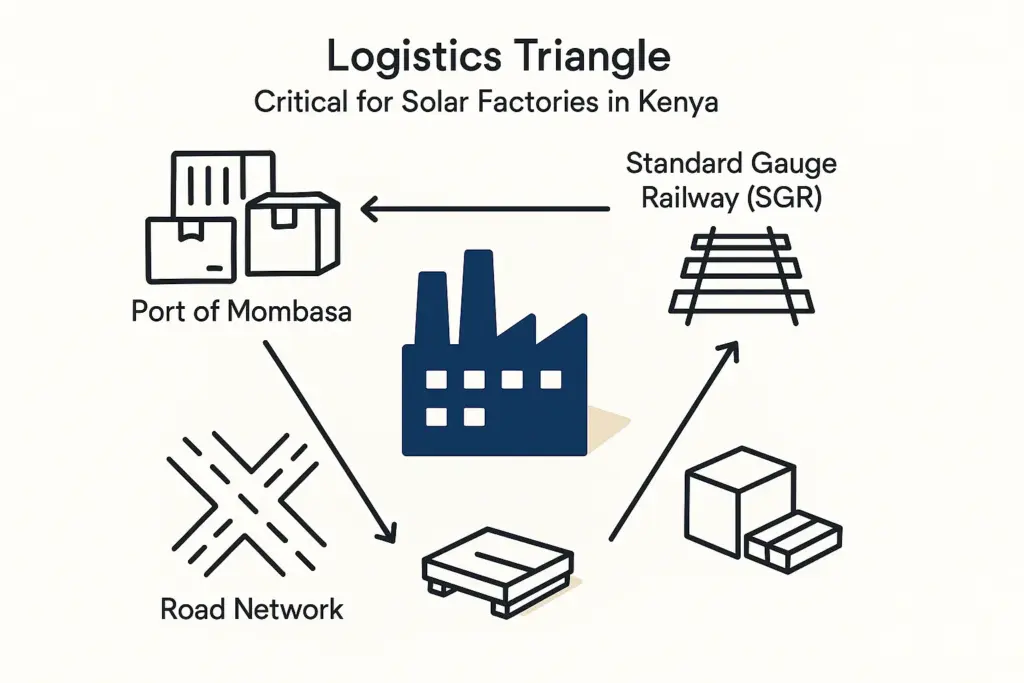
4. Finding Your Factory’s Home: Industrial Zones and Special Economic Zones (SEZs) in Kenya
Kenya is really rolling out the red carpet for industrial development with designated zones that offer better infrastructure and, let’s be honest, some pretty sweet incentives. These industrial parks Kenya and SEZ Kenya options are worth a close look.
A. A Quick Look at Kenya’s Industrial Park and SEZ Scene
The Kenyan government, working through bodies like the Special Economic Zones Authority (SEZA), has officially marked out several SEZs and industrial parks. Information available in early 2025 (from SEforALL) indicated there were 12 gazetted SEZs, with even more on the drawing board. These aren’t just your average industrial parks; they include free trade zones, free ports, and ICT parks, all designed to attract investment and make doing business that much smoother.
B. Hotspots: Promising SEZs and Industrial Parks for Manufacturing
Several zones are really standing out as potentially great places for manufacturing businesses like yours:
- Naivasha Special Economic Zone: This one’s very smartly placed near geothermal power sources (big plus!) and right on the SGR line – very appealing if your factory is going to use a lot of energy.
- Konza Technopolis: While its main focus is on tech, it definitely holds promise for advanced manufacturing and R&D.
- Tatu City: This is a private mixed-use development that includes dedicated industrial parks with some seriously top-notch infrastructure.
- Athi River: A well-established industrial hub with many factories already chugging away, it benefits from being close to Nairobi.
Many of these zones are going the extra mile by developing their own dedicated infrastructure, including reliable power substations, water supply, and ICT connectivity, all geared towards supporting industrial businesses like yours. It’s good to see that level of planning.
C. The Perks: What SEZs Offer Manufacturers
Setting up shop in an SEZ often brings some pretty attractive advantages. According to SEforALL, you could benefit from things like:
- Corporate tax holidays (think a 10-year break, then a lower rate – nice!).
- No VAT or import duties on machinery, raw materials, and intermediate goods.
- Simpler customs procedures and quicker regulatory approvals (less red tape is always good).
- Access to ready-to-go industrial plots with utilities already connected.
These incentives can genuinely make a big difference to your setup costs and your ongoing running costs.
D. Land: What’s Available and What Does it Cost?
Now, land availability and prices can vary quite a bit between different zones and general industrial areas – no surprise there. SEZs often offer competitive lease rates as part of their overall package. It’s absolutely essential, though, to do your homework on land tenure, zoning rules, and all those associated costs. Dot your i’s and cross your t’s on this one!
5. The Kenyan Solar Manufacturing Ecosystem: Understanding the Bigger Picture
It’s also super helpful to understand the wider picture of solar energy in Kenya as you plan your manufacturing venture. Knowing the lay of the land can really inform your strategy.
A. What’s Happening with Local Solar Panel Production Now?
Currently, Kenya’s ability to manufacture solar panels locally, especially the core parts like solar cells, is somewhat limited. This, as KIPPRA points out, means a heavy reliance on imports. Most of the local action you see revolves around assembling modules from imported components or smaller-scale production. But here’s the thing: there’s a fantastic opportunity here to build up more comprehensive local manufacturing. For example, a company like EA Global has already set up shop with projects in Kenya, signaling growing interest and capacity in the region. It shows things are moving!
B. Market Demand: Opportunities On-Grid and Off-Grid
The appetite for solar PV in Kenya is strong – no doubt about it. This demand comes from all angles: large utility-scale projects feeding the national grid, businesses and industries installing rooftop solar for their own use, and a massive off-grid market. The Kenya Off-Grid Solar Access Project (KOSAP), for instance, is working to connect 1.3 million people through 137 solar mini-grids – that alone shows you the sheer scale of off-grid demand (PVKnowhow has good data on this). The solar market Kenya is booming.
C. Government Backing and the Rules of the Game
The Kenyan government is a big cheerleader for renewable energy Kenya, which is great to see. They’ve got various policies and initiatives in place:
- National Energy Policy & Vision 2030: These are the big-picture plans that put renewable energy development front and center.
- Green Manufacturing Initiatives: The “Kenya Green Manufacturing Policy and Investment Guide” (which SEforALL put together) specifically encourages local manufacturing in areas like solar PV.
- EPRA (Energy & Petroleum Regulatory Authority): These are the folks who oversee licensing, standards, and regulations in the energy sector. Good to know who’s who!
- Incentives: Things like VAT exemptions on many renewable energy products and government funding for solar mini-grids also help the market grow (again, PVKnowhow is a good source for these details).
D. Your Workforce: Availability, Skills, and Costs
Kenya has a young and growing workforce, which is a real asset. While you might need to invest in some targeted training for the highly specialized skills needed in solar manufacturing, general manufacturing labor is definitely available. To give you a rough idea, the PVKnowhow 2024 Kenya report suggested approximate monthly wages of around $200 for general solar industry labor and $320 for a solar electrician, with solar design engineers earning something in the neighborhood of $1520. General manufacturing labor costs could be in the $3-$6 per hour range, but it’s always, always best to get the most current figures.
E. Sourcing Your Raw Materials
Initially, you’ll likely need to import most of your raw materials for solar panel manufacturing – we’re talking silicon wafers, solar glass, EVA encapsulant, backsheets, aluminum frames, junction boxes, the whole shebang. So, smart sourcing and really slick logistics are paramount. Looking down the line, though, there could be exciting chances to develop local supply chains for some components, which would be a fantastic development.
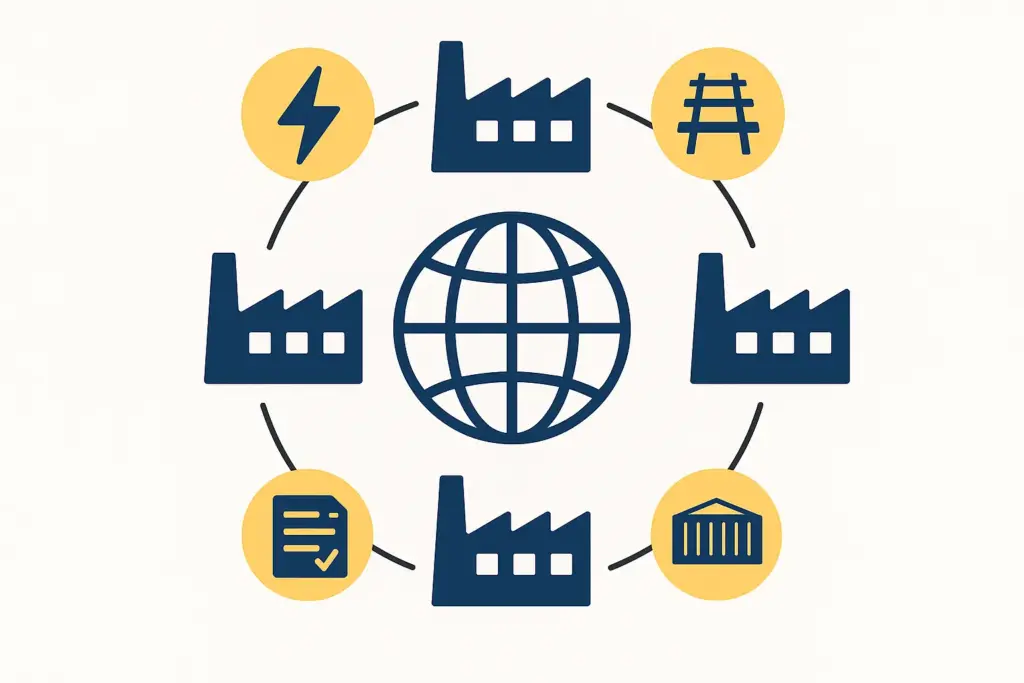
6. Strategic Site Selection: Nailing Down the Key Factors for Your Solar Factory
Picking the right spot for your solar factory in Kenya is truly fundamental to your success. It’s not just about one thing; it’s about looking at all these vital factors together, like pieces of a puzzle for your site selection Kenya solar project:
- Power Reliability and Cost: Lean towards locations with more stable power or those within SEZs that offer dedicated, high-quality power. And don’t forget to factor in those electricity tariffs and the potential savings from on-site solar generation – it could be a game-changer!
- Transport Logistics: How close are you really to the Port of Mombasa (for your imports/exports), the SGR, and major highways? And what are those local access roads like? Get a feel for the daily reality.
- Industrial Zone Benefits: Really dig deep into the specific incentives, the quality of infrastructure, and the land costs offered by different SEZs and industrial parks. Compare them carefully.
- Labor Availability and Skills: Consider the local talent pool. Will you need to set up training programs? It’s good to plan for this.
- Proximity to Markets: While exporting is definitely an option, also think about your access to the growing Kenyan and wider East African domestic markets.
- Water and Waste Management: Make sure there’s enough water for your manufacturing processes (it can be thirsty work!) and proper facilities for waste disposal. Sustainability matters!
- Regulatory Environment and Support: You’ll often find a smoother regulatory path within SEZs, which can save a lot of headaches.
- Overall Operational Costs: Do a thorough cost breakdown: land, construction, utilities, labor, logistics, and regulatory compliance. Leave no stone unturned.
7. Conclusion: The Bright Future of Solar Manufacturing in Kenya
Kenya presents a genuinely exciting and promising setting for establishing your solar panel manufacturing operations. The government’s strong backing for renewable energy, combined with significant market demand and those ongoing infrastructure upgrades, really does create a very positive picture. Yes, there are challenges, particularly with power reliability, but choosing your site strategically within well-serviced industrial zones Kenya or SEZs Kenya, and taking proactive steps like on-site power generation, can effectively manage these risks.
By carefully weighing up the power grid situation, the transport networks, port access, and the perks of various industrial zones, you can lay a really solid foundation for a thriving solar factory in Kenya. The path from an idea to a fully running facility has its complexities, no doubt about it, but with meticulous planning and the right guidance, the potential to contribute to Kenya’s green energy future – and build a profitable, impactful business – is truly immense.
Here at PVknowhow.com, with our decades of experience setting up solar module factories all over the world, we’re genuinely ready and eager to support you on this journey. From business planning and technology selection to turnkey production lines and operational consulting, we’re here to help you build local, resilient clean energy infrastructure. We love this stuff!
Want to learn more or need expert help? Visit our free e-course or explore our services. Or, if you’re ready to dive deeper, our Premium Business Plan E-Course offers personalized guidance to get your venture off the ground. Let’s make your solar journey smooth and successful.
References
All References
- Britannica. Kenya – Transportation and telecommunications. (e.g., https://www.britannica.com/place/Kenya/Transportation-and-telecommunications)
- EA Global. Kenya Solar Manufacturing. (e.g., https://ea-global.us/expertise/kenya-solar-manufacturing/)
- Hivisasa. Articles discussing Kenya’s power grid challenges. (e.g., https://hivisasa.africa/kenyas-power-grid-strained-by-frequent-outages/)
- KenyanWallStreet. Electricity Reliability Worsens as System Losses Hit 24.2% Amid Aging Grid. (e.g., https://kenyanwallstreet.com/electricity-reliability-worsens-as-system-losses-hit-24-2-amid-aging-grid/)
- KIPPRA. Promoting the Use of Solar Energy in the Manufacturing Sector in Kenya. (e.g., https://kippra.or.ke/promoting-the-use-of-solar-energy-in-the-manufacturing-sector-in-kenya/)
- PVKnowhow. Solar Report: Kenya and internal expertise. (e.g., https://www.pvknowhow.com/solar-report/kenya/)
- Roedl.com. Solar Power Frontier: Kenya Renewable Energy Sector. (e.g., https://www.roedl.com/insights/renewable-energy/2016-07/solar-power-frontier-kenya-renewable-energy-sector)
- SEforALL. Kenya Green Manufacturing Policy and Investment Guide. (e.g., https://www.seforall.org/publications/kenya-green-manufacturing-policy-and-investment-guide)
- Trade.gov. U.S. Department of Commerce, International Trade Administration. Kenya – Infrastructure. (e.g., https://www.trade.gov/country-commercial-guides/kenya-infrastructure)

